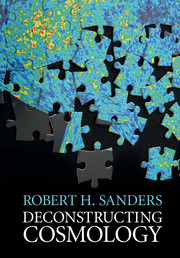Book contents
7 - Dark Matter
Published online by Cambridge University Press: 12 October 2016
Summary
If dark energy is the yeast in the cosmic cake, the dark matter is the flour – it provides the substance and the material content. At first thought, it would seem to be more substantial and comprehensible than dark energy, so we might expect to have a better understanding of this medium. As a concept it has been around longer and is easier to visualize: we can all imagine billiard balls bouncing around in the gravitational potential well of a galaxy.
In fact, dark matter is stranger than the billiard-ball picture. The particles that are thought to comprise dark matter are non-standard – not the usual protons and neutrons of baryonic matter. They are electrically neutral, they do not interact directly with photons, and they interact rarely with baryons and rarely with themselves; it is as though the billiard balls can pass right through each other and everything else. They are notoriously difficult to detect by any direct non-astronomical technique, which is to say, the matter is very dark indeed. The essential interaction with normal baryonic matter and photons is gravitational, and the direct long-range gravitational influence of dark matter upon observed systems – clusters of galaxies, spiral and elliptical galaxies, dwarf spheroidal galaxies – is the primary evidence for its existence. So, in fact, this medium is just as peculiar and poorly understood as dark energy, and its existence requires new and exotic physics.
Evidence for Dark Matter in Galaxies and Galaxy Systems
The very first evidence of the dynamical effects of a substantial unseen component in a bound gravitational system was discovered in 1933 by Fritz Zwicky, not in individual galaxies but in a cluster of galaxies. Here the individual galaxies are moving much too fast if the only mass is in the visible starlight of the galaxies. The system should be unbound – the galaxies should not be seen to be clustered but flying away from each other, unless there is an unseen component holding the cluster together. Zwicky first used the term “dark matter” to describe this unseen component and estimated that it must outweigh the visible matter by a factor of several hundred. Subsequently, much of the “missing mass” was found to be in the form of X-ray-emitting hot gas (baryons), which can outweigh the visible stars in galaxies by a significant factor.
- Type
- Chapter
- Information
- Deconstructing Cosmology , pp. 77 - 95Publisher: Cambridge University PressPrint publication year: 2016



